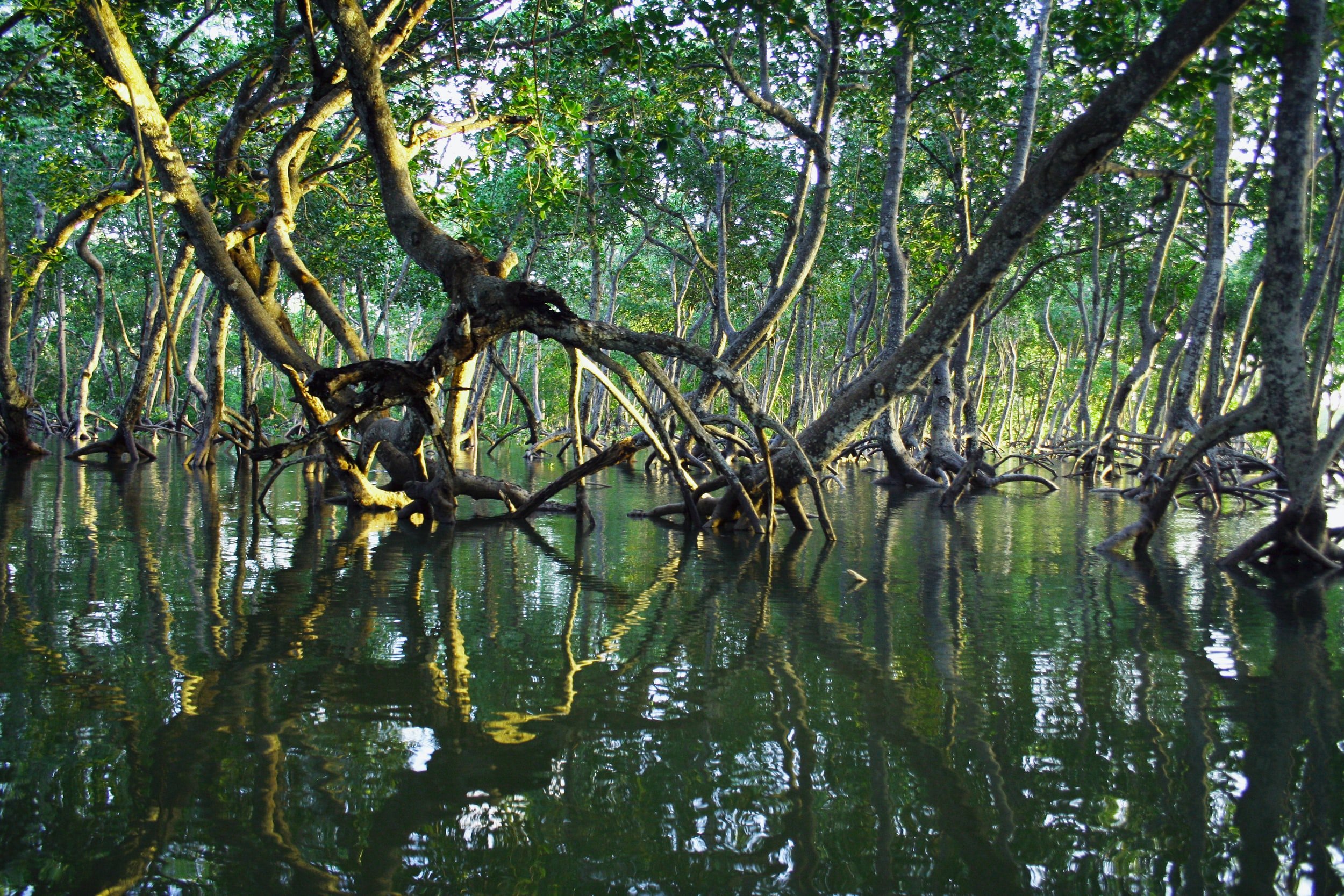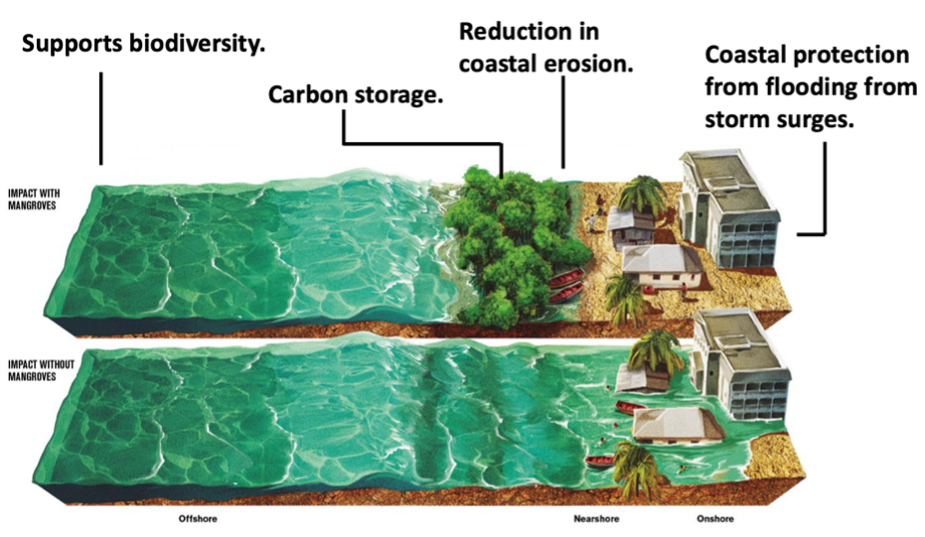Benefits of Mangroves - Flood Protection
Coastal regions are susceptible to the actions of erosion, tsunamis, storms, and floods. In many coastal regions, climate change is increasing the frequency and severity of these threats as well as causing global sea levels to rise. These hazards can put people’s possessions, homes, and even lives at risk, yet something as simple as planting trees can make a great difference.
Mangroves are unique trees which thrive in coastal settings, tolerating the brackish waters and coping with wind and wave action that most other tree species could not. This means they can protect coastal regions from winds, waves, and floods; extensive mangrove forests can reduce storm surge depth by 5-50cm per KM width of forest. Although that may seem like a small reduction in water level, it can greatly reduce the extent of flooding further inland behind the forest, making mangroves a valuable natural method of protection.
The mangrove trees and their root systems are strong so they can cope with wave action; acting as a physical buffer between the marine and terrestrial environments. When the waves hit the mangrove forest the energy of the wave is reduced and therefore the power the wave has to cause erosion, devastation and damage to structures is also reduced. For example, the height of waves on a rising tide can be reduced by 13-66% per 100m of mangrove as the tangled root systems and low hanging branches rapidly diminishes wave energy. In a dense mangrove forest with various species of different ages and sizes there is a more complex structure of aerial roots, low branches and stabilised sediment, wave height may be halved after passage through 100m of mangroves, whilst it may take 500m to reduce waves by half in a more open forest. Localised winds can also be reduced by the passage through dense mangrove forests, which can prevent waves propagating or re-forming during a storm, lessening the overall storm impact.
Mangroves provide the first line of defense against coastal floods in many tropical regions.
Mangrove roots help to slow down incoming waves
The mangrove root networks can also reduce debris movement and enhance sedimentation. The roots stabilise current soils and trap sediments both from inland and localised litterfall from the mangroves themselves which can encourage active soil build-up to reduce erosion. The extensive root networks slow the flow of water over the surface of the soil and allow any sediments already suspended to settle out from the water and increase sediment deposition. The building of soils along with the ability of mangrove roots to push soil upwards can result in a high soil level, which can be a useful defence day to day for low lying regions which are becoming affected by rising sea levels.
Mangrove forests are also carbon-rich habitats, by growing mangrove forests, more carbon can be sequestered by photosynthesis in habitats where other trees would not thrive. This role in reducing global warming will consequently reduce the rate of sea level rise, thus further reducing the risk of flooding in low lying areas. Mangrove forests can also trap carbon in their soils. The sediments and leaf litter trapped by the root systems are often waterlogged, meaning there is a lack of oxygen present preventing soil organisms breaking down the organic matter. This allows the organic matter to become trapped rather than being released back into the atmosphere.
Mangroves are a valuable method of protection against natural hazards in coastal regions, which is why, with your help, LEAF are working to restore 7 ha of mangrove forests in Kenya. Understanding the importance of a diverse mangrove forest, the team will be planting 7 different species. The variation in species creates a more complex network increasing the resilience of the forest and their impact on wave energy reduction and flooding.



